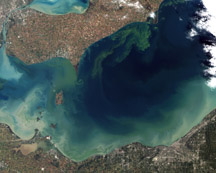American seed fund - Startups
Get started
https://seedfund.nsf.gov/apply/get-started/
Learn how startups can get up to $2 million to develop deep technologies. We'll walk you through our process and timeline, how to submit a Project Pitch and what to expect along the way.
The basics
https://seedfund.nsf.gov/apply/the-basics/
Learn about the research and development work we fund, the eligibility requirements, and our technology topic area
what we fund
We help startups navigate the earliest stages of technology translation, investing roughly $200 million annually in approximately 400 startups. Each startup can receive up to $2 million to support translational research and development. From advanced manufacturing to artificial intelligence to biological technologies to environmental technologies, we fund nearly all areas of technology.
Award History
https://seedfund.nsf.gov/awardees/history/
As of 08/12/2021
This page contains startup and small business award information since 2011. For awards prior to 2011, please use the NSF award search.
Project pitch
https://seedfund.nsf.gov/apply/full-proposal/
Submit a Project Pitch to see if your idea might be a good fit for NSF funding.
Timing
We accept Project Pitches at any time (24/7) and 365 days a year. Typically, it takes about one month to get an official response from NSF staff.
Instructions
The required Project Pitch allows startups to learn if their proposed project is a good fit for funding from America’s Seed Fund powered by NSF. See four key questions you'll be asked to answer.
Submission
We recommend treating the submission window like a deadline, but you can submit anytime within a year of receiving an official invitation from NSF. (NSF uses quarterly submission windows to help gather and review proposals, but sometimes proposals are reviewed as they are received.)
https://www.nsf.gov/pubs/2021/nsf21562/nsf21562.htm
https://www.nsf.gov/pubs/2021/nsf21563/nsf21563.htm
Dun and Bradstreet (DUNS number)
https://sam.gov/content/home
Processing time: Up to five business days
A DUNS number is a unique, nine-digit number that identifies each physical location of your company. You’ll need one in order to receive government funding. Because you’re applying for a DUNS number for government funding, processing time should take about five business days.
https://www.research.gov/research-web/
Proposal review & decision
Once you submit your Phase I proposal, NSF finds at least three external experts (in technology, commercialization, or both) to review it and provide feedback.
All proposals are reviewed against the NSF merit review criteria, which cover the quality of research (intellectual or technical merit), its potential impact on society (broader impacts), and the commercial potential of the project (commercial impact).
Proposal documents and status
Review your submission
To
review your submitted Phase I proposal, login to Fastlane
and navigate to the “Proposals, Awards, and Status” tab. The
proposal status is also found on this page and, once a final decision
has been made, the full text of the written (anonymous) reviewer
feedback is available to the Principal Investigator here.
__________________________________________________
This checklist was developed by CalNonprofits in consultation with the California Attorney General’s Office. Although we make every effort to identify errors and fix broken links, please help us keep up-to-date by contacting us if you find errors.
https://calnonprofits.org/resources/nonprofit-compliance-checklist
Forms for all 501(c)(3) nonprofits
Annual Registration Renewal Fee Report (RRF-1 Form)
Annual Treasurer's Report (CT-TR-1 Form and Instructions)
Exempt Organization Annual Information Return (FTB Form 199) (Instructions)
Annual Electronic Filing Requirement for Small Exempt Organizations FTB 199N
Statement of Information (Form SI-100)
U.S. Federal Forms
Return of Organization Exempt from Income Tax (Form 990) (Instructions)
Short form Return of Organization Exempt from Income Tax (Form 990-EZ) (Instructions)
Annual Electronic Filing Requirement for Small Exempt Organizations (Form 990-N) –





